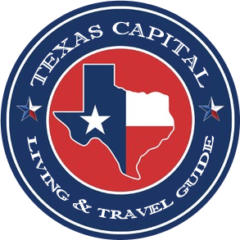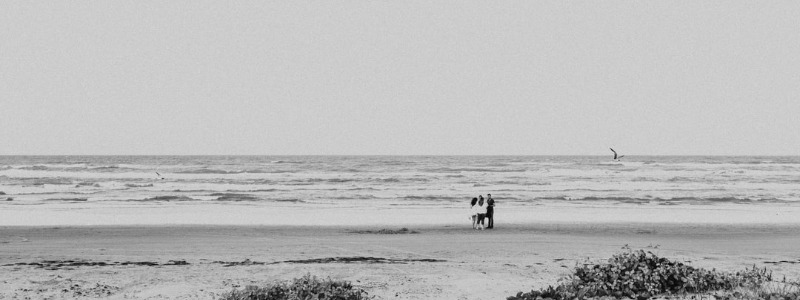For nearly 60 miles beach motorists can traverse the unspoiled environment of Padre Island National Seashore, dodging assorted trash and treasure, for a Texas escape that puts you on the edge of nothing – and in the middle of an unforgiving paradise.
It’s been called sixty miles of pure loneliness, State Park 22, originating just south of Corpus Christi and stretching down a sand bar surrounded by water until it reaches the Port Mansfield cut, is the longest stretch of undeveloped beach you can drive in America and a rare gem of remote isolation experienced by only a few of the state’s 22 million people. And for good reason.
This drive is more of an adventure than it is a Sunday drive, offering a score of driving hazards and a few dozen other obstacles that can make you lose your way in spite of being on the only road on the narrow island. And be warned, it takes a sturdy 4-wheel drive vehicle and plenty of determination if you’re going to make this trip. Even at that, you’re subject to the whims of the weather and unpredictable surf conditions before you reach the end of the island.
This rugged and lonely sand highway stretches down the middle of North Padre Island through the center of Padre Island National Seashore, providing some of the best coastal scenery and wildlife encounters you could ever hope to find. In fact, with the absence of development, the island looks the same today as it did hundreds of years ago, providing an “out-of-time” experience you can get many other places.
It’s not unusual to encounter a coyote or two, a few overly-large jack rabbits, thousands of resident and migratory birds, a rattlesnake or two, roadrunners, kangaroo rats, or dozens of other animal species who call the barren island home while on your drive. The ecologically-rich region is an ideal destination if you’re looking to ‘get back to nature’.
Wildlife indigenous to the island includes:
- 4 Turtle Species (all are either endangered or threatened): Leatherback, Green, Hawksbill, and Kemp’s Ridley
- 11 Endangered Species: Eastern Brown Pelican, Piping Plover, Black-capped Vireos, Kemp’s Ridley Sea Turtle, Green Sea Turtle, Leatherback Sea Turtle, and Hawksbill Sea Turtle, Reddish Egret, White-tailed Hawk, Ferruginous hawk, White-faced Ibis
- Over 350 bird species inhabit Padre Island National Seashore throughout the year
- Several mammals inhabit Padre Island: coyotes, white-tail deer, Kangaroo rats, pocket gophers, prairie dogs, opossums, raccoons and black-tailed jackrabbit
Designated as critical habitat for several species of threatened and endangered birds: Aplomado Falcon, American Swallow-tailed Kite, Woodstork, and Bald Eagle.
A primary leg of the vast barrier island chain that hugs the Texas coast just offshore, Padre Island is the longest barrier island in the United States. Before the Mansfield cut was dredged to permanently allow passage of fish and boats from the bay to the Gulf, North Padre and South Padre Islands were considered one island. But getting across the cut between the legs of the two islands today requires a boat. If you were able to pass, you could continue down South Padre Island’s desolate beaches another 30-plus miles before you would run smack into the Town of South Padre Island, near the tip of Texas.
Once the home to an indigenous race of overly large and body-tattooed people known as the Karankawas, the island, in spite of barren landscape void of anything but sand dunes, marshes, and beach, is a suitable environment to sustain human and animal life. The Karankawas were a successful fishing tribe. They were also skilled hunters and managed to grow and gather some of their food supply from the stingy environment.
Once thought to be a cannibalistic tribe, recent research indicates that these rugged people were more unsociable than they were savage, and were extremely territorial when it came to others who discovered their little corner of paradise.
After spending quality time on the island, who could blame them?
If you make the drive in hopes of finding a quaint little hotel or beach lodge, or if you’re looking for that perfect beach palapa where you can order a drink with a little umbrella in it, then you have come to the wrong place. This road leads to nowhere. No rest areas, no beach shops, no T-shirt vendors or snow cone stands, no bars, restaurants, or running water. The only thing you can depend on finding here, in fact, is pure adventure – like searching for buried pirate treasure, combing the beach and dunes for wreckage of treasure-laden ships that sank in the surrounding waters or washed onto shore, soaking up the warm sun surrounded by little more than blowing sand and wide open spaces, fishing and playing in the endless surf, and walking for miles and miles of undisturbed thought.
As far as treasure is concerned, yes – there is treasure to be found. A great deal of known treasure still lies buried in the drifting sands, lost and buried by this timeless land.
One of the better known examples involves the dredging of the Mansfield cut at the southern tip of the National Seashore. This is where marine construction workers ran right over the wreckage of the Santa Maria De Yciar, a Spanish ship laden with New World treasure and enroute back to Spain when it washed over he island in a storm and sank in the shallows of Laguna Madre Bay. Through the years, the ship slowly sank in the soft bottom of the bay. While mechanized trenchers worked in the channel, they snagged pieces of the wreckage, throwing old Spanish coins and other artifacts along both sides of the channel. The site quickly caught the attention of state authorities, who have since passed a law making claim to “historical” treasures uncovered on the island. But beachcombers and treasure hunters still flock to the island after a storm in search of treasures large and small, and occasionally they find scattered artifacts of value.
More than historical treasure, beachcombers will find a wide assortment of trash that has washed onto the beach. In addition to sea shells, sand dollars, driftwood and coconuts from distant lands, you’re likely to find plastic bottles in varying degrees of decomposition, deteriorating pieces of rope and fishing net, unidentifiable pieces of ships, boats, nautical equipment and supplies, jellyfish, seaweed, an occasional bale of marijuana – and so forth. Unlike popular and nearby resort beaches, this lonely stretch of ocean front isn’t bulldozed to remove debris. So if be aware. If such things are offensive, stick to the resort beaches. And a word of extra caution, be careful handling debris on the beach. Use common sense and disturb nothing you don’t want to research or keep.
If you’re a weekender in search of a spot to plant your umbrella and take in the pleasures of a modern beach resort, then stay clear of this remote section of island. This beach is unspoiled by development, and in spite of trash that washes on shore from ships and distant places, there’s little to see or do here except to commune with nature and the harsh elements that created this “paradise”.
Producers of the hit TV series “Survivor” would do well to discover Padre Island. Pitching a tent in the sand and spending a few days combing the environment is an out-of-time experience not easily forgotten. It’s a beautiful environment – and a harsh one.
If you’re planning an adventure down the sun-drenched isle – be prepared! Always check beach driving conditions at the National Seashore headquarters near the park entrance. Take plenty of drinking water, sun block, chains or tow rope, a communication device (cell phones may be out of range), and a good plan of survival in the event you get stuck in the sand – which happens often. The park patrol drives the island on an irregular schedule, so you won’t get stuck forever. But remember the harsh coastal elements can make survival a tricky thing if you’re unprepared, even for a day or two.
Start your adventure at the southern end of Corpus Christi’s South Padre Island Drive (SPID). This marks the intersection with State Park Road 22. Traveling in pairs in more than one vehicle is always a wise idea.
For more information, contact the Padre Island National Seashore ranger station.

